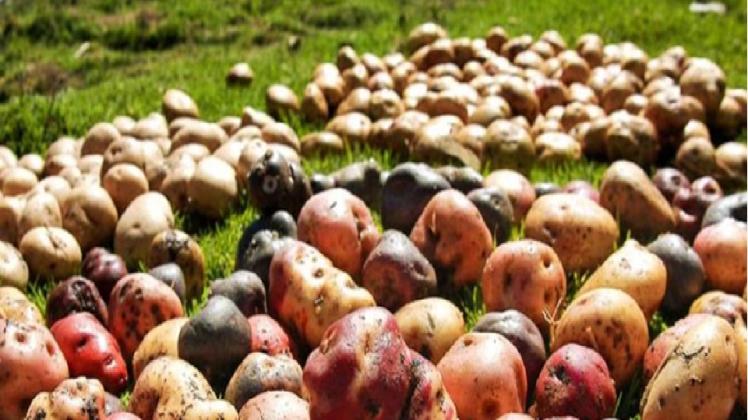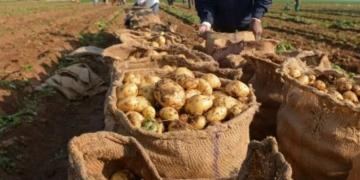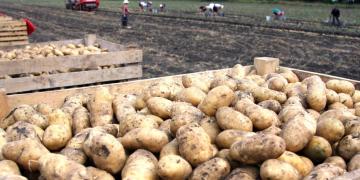Peru (CIP): Peruvian biofortified potatoes reach the Indian market
The CIP director general indicated that these varieties arrive in India as part of a comprehensive plan aimed at strengthening both food security and the development of the agricultural sector in the region.

India is about to take a major step in the fight against malnutrition thanks to a new iron-biofortified potato variety developed by the Peru -based International Potato Center (CIP). This was confirmed by CIP Director General Dr. Simon Heck during an interview with the Indian media outlet The Hindu. He explained that these potatoes will soon reach Indian markets as part of a broader strategy to improve nutrition and agricultural opportunities in the region.
This development is part of CIP ’s efforts to strengthen its presence in South Asia, particularly with the creation of a new regional center in Agra, strategically located in the heart of India ’s potato belt . Dr. Heck stated that this facility will improve farmers’ access to high-quality potato and sweetpotato seeds and provide them with better connections to markets.
The new CIP center will be located on the outskirts of Agra, within the Indo-Gangetic Plains, the largest potato- producing area in the world. The initiative is the result of an agreement with the Indian Ministry of Agriculture , signed in late July, following a specific request from the Indian government. The state of Uttar Pradesh provided the land, which was then transferred to the National Horticulture Council, which invited CIP to enter into this collaboration.
The objective is clear: to boost the potato sector as a key source of economic growth. According to Heck, India has the most dynamic potato production globally, which has sparked the interest of international companies, especially European and North American ones, which have begun to invest heavily in this sector.
One of the main challenges facing Indian farmers is limited access to quality seeds. “What they need is the right seeds, of the right variety, at the right time,” Heck noted. Currently, seeds often arrive late, in small quantities, or of poor quality, which negatively impacts yields.
To address this issue, the CIP will work with private companies and public research institutes. Its mission will be to ensure that the entire process, from the creation of new varieties to their annual multiplication in different regions of the country, guarantees farmers a constant and reliable supply of plant material.
CIP’s strategy is not limited to agricultural production , but also emphasizes the social dimension. Dr. Heck stated that one of the goals is to ensure that vulnerable populations have access to nutritious potatoes. This includes collaborating with state school feeding programs, such as half-day lunches, and systematically introducing fortified potatoes into these initiatives.
In addition, CIP is working on new varieties with higher iron content . "We have already shared the germplasm with ICAR’s Central Potato Institute in Shimla. The first variety was released in Peru, where iron deficiency is even more severe. It is now being evaluated in India for adaptation to local conditions," he explained.
Along with potatoes , CIP is also promoting the cultivation of vitamin A-enriched sweet potatoes. These varieties, with their intensely orange flesh, are already grown in the states of Karnataka, Odisha, Assam, and West Bengal. “It is already widely produced,” Heck confirmed.
Biofortified sweet potato , in addition to its nutritional value, represents an excellent commercial opportunity. It is a tropical crop that requires no refrigeration or additives and can be stored for up to two years, making it ideal for countries like India and several African regions. "It can be consumed as is in a school lunch, and is also useful for the food industry in pastries and bakeries," he indicated.
Another key issue the CIP regional center will address will be market price volatility. Dr. Heck noted that fluctuations between oversupply and undersupply affect both producers and consumers. Therefore, he proposed working with the government on regulatory and planning mechanisms, through market boards and stabilization programs.
He also noted that developing new varieties would allow for increased seasonality in harvests. If farmers don’t all harvest at the same time, this will prevent market saturation and achieve a more even distribution of production throughout the year.
The new center will be governed by a coordinating committee comprised of the agricultural secretaries of India, Nepal, Bhutan, and Bangladesh. This regional approach seeks not only to improve production but also to understand market dynamics and strengthen value chains.
With this initiative, CIP is committed to more sustainable, inclusive, and nutritionally impactful agriculture, positioning biofortified potatoes and sweet potatoes as key tools for combating malnutrition and promoting economic development in South Asia.
Fuente:




